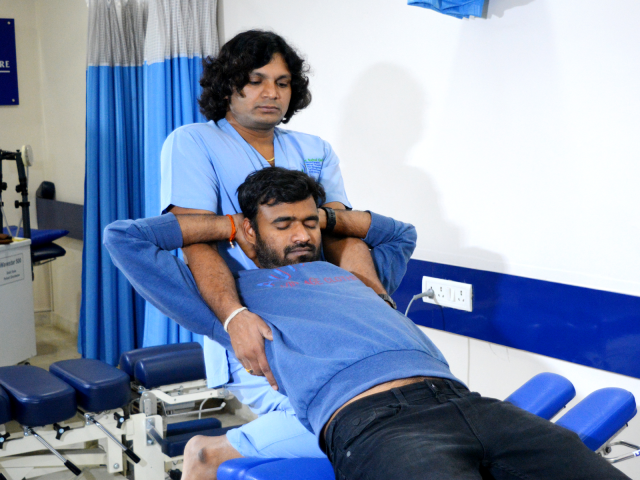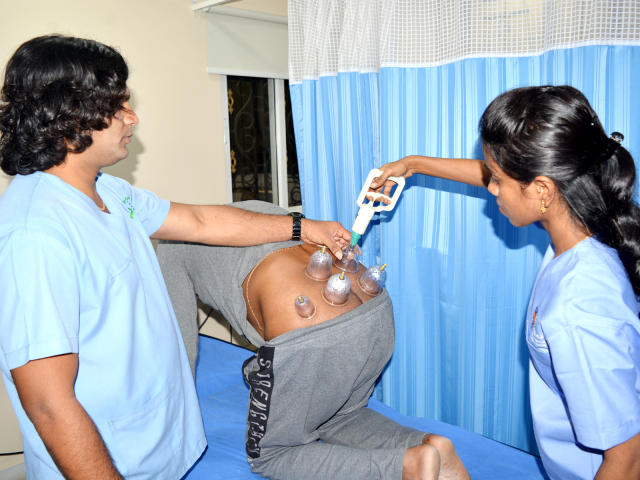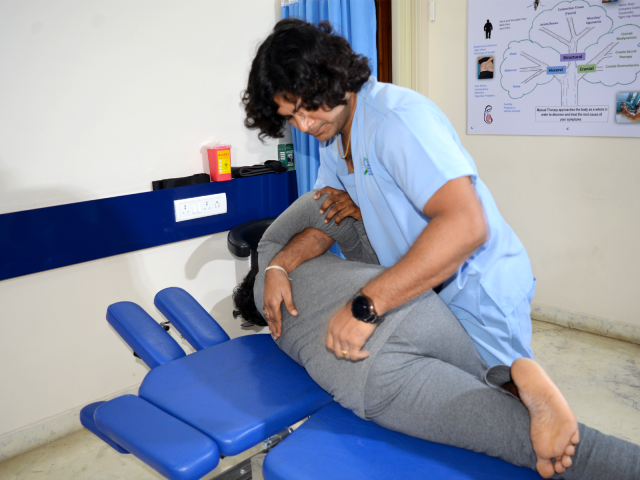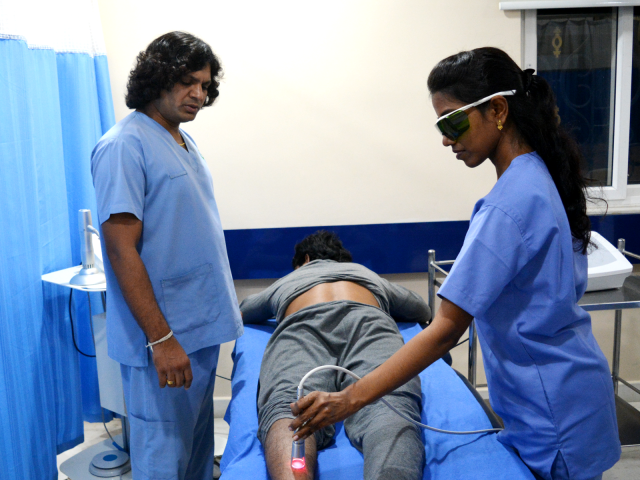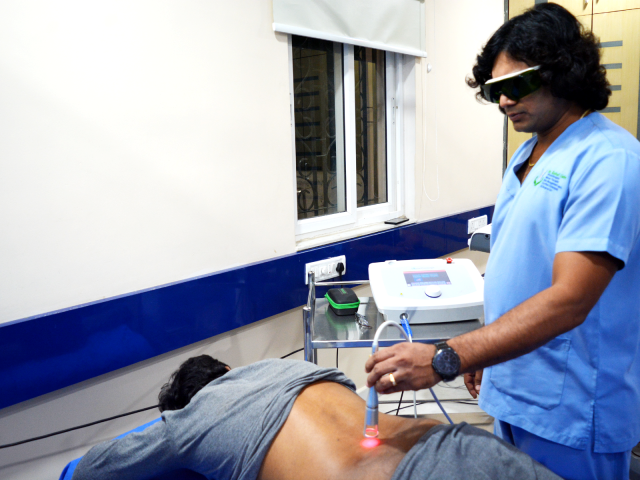pain management
“Managing pain, restoring comfort – one step at a time.”
ABOUT pain management
Pain management is the process of treating and alleviating physical discomfort, such as acute or chronic pain. Pain is a complex phenomenon that can have multiple causes, and it can be challenging to find the most effective treatment. However, with advances in medicine and technology, there are now many different options for pain management that can help individuals live a more comfortable and pain-free life.
One of the most important aspects of pain management is accurate diagnosis. In many cases, pain is a symptom of an underlying condition or injury, and treating the underlying cause can help to reduce or eliminate the pain. For example, if someone has back pain caused by a herniated disc, treating the disc problem may alleviate the pain. However, in other cases, the cause of the pain may be unknown, and managing the pain itself becomes the primary goal.
One of the most commonly used methods of pain management is medication. There are many different types of pain medication, including over-the-counter analgesics such as acetaminophen and ibuprofen, as well as prescription medications such as opioids, muscle relaxants, and anti-inflammatory drugs. It is important to note that while medication can be very effective in reducing pain, it can also have side effects and risks. Opioids, in particular, can be addictive and have a high potential for abuse.
Another approach to pain management is physical therapy. Physical therapy can help to reduce pain and improve function through exercises and other techniques designed to strengthen muscles, improve flexibility, and reduce inflammation. Physical therapy can also help individuals learn how to move their bodies in ways that are less likely to cause pain.
In addition to medication and physical therapy, there are many other approaches to pain management, including acupuncture, massage therapy, and cognitive-behavioral therapy. Acupuncture involves the insertion of thin needles into specific points on the body to stimulate the body’s natural healing processes. Massage therapy can help to reduce muscle tension and improve circulation, while cognitive-behavioral therapy can help individuals to change the way they think about pain and develop coping strategies to manage it more effectively.
Overall, pain management is an important area of healthcare that can significantly improve quality of life for individuals experiencing pain. While there is no one-size-fits-all approach to pain management, there are many different options available that can be tailored to the individual’s specific needs and circumstances. With the right treatment and support, individuals can learn to manage their pain effectively and live a more comfortable, active life.
Pain is an unpleasant sensation that can be caused by various factors such as injury, illness, or chronic conditions. Pain can have a negative impact on a person’s quality of life, causing physical and emotional distress. Pain management is the process of easing the pain experienced by a person through various techniques and methods.
Pain management can involve different approaches depending on the type and severity of the pain, as well as the individual’s overall health and medical history. Here are some common methods used in pain management:
-
Medication: Pain medication is often the first line of treatment for managing pain. Over-the-counter pain relievers like ibuprofen or acetaminophen can be used to treat mild to moderate pain. Prescription opioids, which are stronger pain relievers, are reserved for severe pain and are typically used for short periods due to their potential for addiction and other side effects.
-
Physical Therapy: Physical therapy can be effective in managing chronic pain. It can involve exercises, stretching, and manual therapy to reduce pain and improve mobility. It can also include modalities like heat or cold therapy, ultrasound, or electrical stimulation.
-
Acupuncture: Acupuncture is a complementary therapy that involves the insertion of thin needles into the skin to stimulate specific points on the body. It can be used to manage chronic pain conditions like back pain, neck pain, or headaches.
-
Mind-Body Techniques: Mind-body techniques such as relaxation techniques, meditation, or biofeedback can help manage pain by reducing stress, anxiety, and tension. These techniques can also improve mood, sleep, and overall quality of life.
-
Surgery: Surgery may be necessary to manage pain caused by a specific condition or injury. In some cases, it may be the best option to relieve pain and improve function.
-
Complementary and Alternative Medicine (CAM): CAM therapies such as massage therapy, chiropractic care, or herbal remedies can be used to manage pain. These therapies are often used in combination with other pain management techniques.
It’s important to note that pain management should be tailored to the individual’s needs and goals. Pain management plans may change over time as the individual’s condition or needs change.
In conclusion, pain management is an important aspect of healthcare that can significantly improve a person’s quality of life. It involves a multidisciplinary approach that includes medication, physical therapy, complementary therapies, and other techniques. If you are experiencing pain, it’s important to seek medical attention and work with your healthcare provider to develop an individualized pain management plan.
Pain management is a crucial aspect of healthcare, as pain can have a significant impact on a person’s quality of life. Pain can be acute or chronic, and can be caused by a variety of conditions, including injury, illness, and surgery. Pain management involves the use of various techniques and medications to reduce or eliminate pain and improve a person’s overall well-being.
The first step in pain management is to identify the cause of the pain. This may involve a physical exam, medical history, and diagnostic tests such as X-rays or MRIs. Once the cause of the pain has been determined, a healthcare provider can develop a treatment plan.
One of the most common types of pain management is medication. Over-the-counter pain relievers such as acetaminophen and ibuprofen can be effective for mild to moderate pain. For more severe pain, prescription medications such as opioids or muscle relaxants may be necessary. It is important to work closely with a healthcare provider when taking prescription pain medication, as they can be addictive and have potential side effects.
Physical therapy and rehabilitation can also be effective for managing pain. These therapies involve exercises and stretches to improve mobility and reduce pain. They may also include massage, acupuncture, or other alternative therapies.
Psychological therapies can also play a role in pain management. Techniques such as cognitive-behavioral therapy can help people learn to cope with pain and reduce stress and anxiety that can exacerbate pain.
In some cases, surgery may be necessary to manage pain. For example, joint replacement surgery can be effective for managing chronic pain caused by arthritis.
In addition to these treatments, there are a number of lifestyle changes that can help with pain management. Eating a healthy diet, getting regular exercise, and practicing stress-reduction techniques such as yoga or meditation can all be effective ways to manage pain.
Pain management is an important aspect of healthcare, and there are many different approaches that can be effective for managing pain. By working closely with healthcare providers and exploring different treatment options, people can find a pain management plan that works for them and improves their overall quality of life.
Pain management is an essential aspect of healthcare that focuses on reducing or eliminating pain in patients. Pain can be a significant source of distress for individuals and can affect their quality of life. Therefore, it is important to manage pain effectively to improve patients’ overall well-being.
Types of Pain :
There are two primary types of pain: acute and chronic. Acute pain is temporary and usually results from an injury or illness. It typically lasts for a short period, ranging from a few days to a few weeks. Chronic pain, on the other hand, is ongoing and can last for several months or even years. It can result from an injury or illness or develop for no apparent reason.
Methods of Pain Management :
Pain management can be achieved through several methods, including medication, physical therapy, surgery, and alternative therapies.
Medication :
Pain medication is the most common method of pain management. It includes over-the-counter (OTC) drugs such as acetaminophen and nonsteroidal anti-inflammatory drugs (NSAIDs) like ibuprofen, as well as prescription opioids. Opioids are highly effective at reducing pain but come with a risk of addiction and abuse. Therefore, they should only be used under the guidance of a healthcare professional.
Physical Therapy :
Physical therapy is a form of pain management that involves exercises and other physical interventions. It is particularly useful for individuals experiencing chronic pain. Physical therapy can help reduce pain and improve mobility and flexibility.
Surgery :
Surgery is an option for individuals experiencing severe pain that cannot be managed with medication or other therapies. Surgery is often used to repair or replace damaged tissues or organs, such as a joint replacement surgery for chronic joint pain.
Alternative Therapies :
Alternative therapies such as acupuncture, massage, and chiropractic care can also be used for pain management. These therapies can be effective for certain types of pain, and many individuals find them to be a useful complement to other pain management strategies.
Conclusion :
Pain management is an essential aspect of healthcare that can help improve patients’ quality of life. It can be achieved through various methods, including medication, physical therapy, surgery, and alternative therapies. Healthcare professionals should work closely with patients to determine the most effective pain management strategy for their needs while also ensuring the safe use of medications to avoid the risk of addiction and abuse.
Pain is a common and complex experience that affects people of all ages and backgrounds. It is a subjective feeling that can range from mild discomfort to debilitating agony, and it can be caused by a variety of factors, including injury, illness, and chronic conditions. Effective pain management is essential to improving the quality of life for those who suffer from it. In this article, we will explore different strategies for pain management, including both conventional and alternative approaches.
Conventional Pain Management :
Conventional pain management typically involves medication, physical therapy, and sometimes surgery. Medications used for pain management include over-the-counter drugs like acetaminophen and ibuprofen, as well as prescription opioids like oxycodone and hydrocodone. While opioids can be effective at managing pain, they can also be highly addictive and come with a risk of overdose. Thus, they must be prescribed and used under the guidance of a medical professional.
Physical therapy is often used to manage pain caused by injury or chronic conditions like arthritis. Physical therapists can develop personalized exercise plans and techniques to help alleviate pain and improve mobility. Surgery may also be an option for certain types of pain, such as back pain caused by a herniated disc.
Alternative Approaches to Pain Management :
Alternative approaches to pain management include non-pharmacological methods like acupuncture, massage therapy, and mindfulness meditation. Acupuncture involves the insertion of thin needles into specific points on the body, and some studies suggest that it can help alleviate pain. Massage therapy, which involves the manipulation of muscles and tissues, can also be effective at reducing pain and improving mobility.
Mindfulness meditation involves focusing on the present moment and developing a non-judgmental awareness of one’s thoughts and feelings. Studies have shown that mindfulness meditation can help reduce chronic pain by changing the way the brain processes pain signals.
Other alternative approaches to pain management include herbal remedies and dietary supplements. Some herbs, such as turmeric and ginger, have anti-inflammatory properties and may help reduce pain and inflammation. Dietary supplements like omega-3 fatty acids and glucosamine may also be effective at managing pain caused by arthritis.
Conclusion :
Pain management is an essential part of healthcare, and there are many different strategies for managing pain, both conventional and alternative. It is important to work with a healthcare provider to develop a personalized pain management plan that takes into account the specific type and severity of pain, as well as any underlying medical conditions. By using a combination of approaches, it is often possible to effectively manage pain and improve quality of life for those who suffer from it.
Pain management
Lorem ipsum dolor sit amet, consectetur adipiscing elit. Ut elit tellus, luctus nec ullamcorper mattis, pulvinar dapibus leo.









If you need urgent care, simply call our 24 hour emergency hotline.
Your personal case manager will ensure that you receive the best possible care.
Call Now (toll free)


